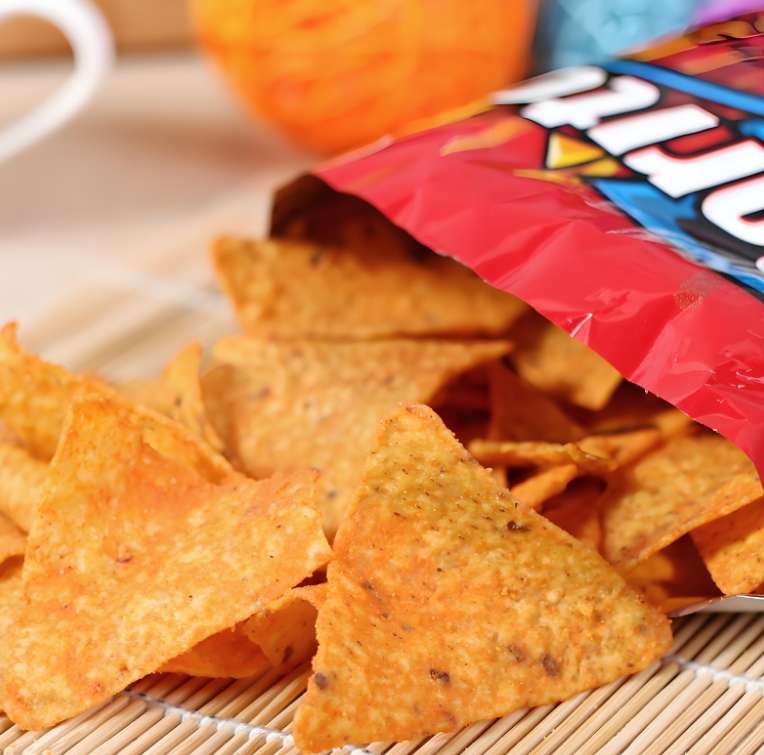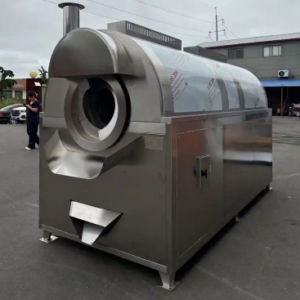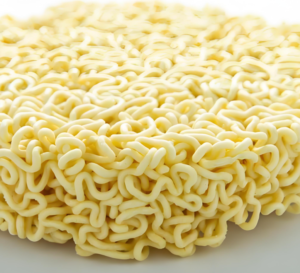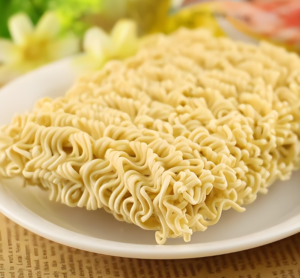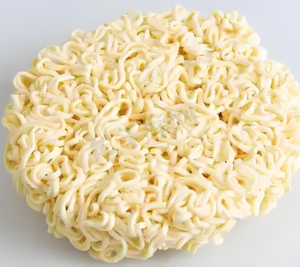<h1>Oil-Fried Triangular Chips Production Process: A Comprehensive Guide for B2B Manufacturers</h1>Introduction to Oil-Fried Triangular Chips
Oil-fried triangular chips are a popular snack in the global food market, known for their crispy texture and versatile flavors. These chips, often derived from corn, wheat, or potato bases, are a staple in B2B trade, especially for exporters targeting international markets. Understanding the production process is essential for manufacturers aiming to optimize efficiency, ensure quality, and meet regulatory standards.
doritos chips making machine
ToggleIn the competitive world of foreign trade, mastering the oil-frying technique can enhance product appeal and profitability. This article explores the step-by-step production process, highlighting key considerations for B2B professionals in the food industry.
Raw Materials and Ingredient Selection
Selecting high-quality raw materials is the foundation of producing superior oil-fried triangular chips. Common ingredients include cornmeal, wheat flour, or potato flakes, which provide the base structure and nutritional value.
Manufacturers must prioritize ingredients that are non-GMO and sourced sustainably to comply with international trade regulations. Additives like salt, spices, and preservatives are also crucial, but they should be chosen based on target market preferences, such as low-sodium options for health-conscious consumers.
- Key factors in ingredient selection: Ensure moisture content is controlled to prevent uneven frying.
- Sourcing tips: Partner with certified suppliers to guarantee traceability and reduce supply chain risks.
- Cost considerations: Bulk purchasing can lower costs, but always balance with quality to maintain B2B competitiveness.
By focusing on premium ingredients, producers can differentiate their products in the global marketplace, appealing to buyers seeking reliable, high-standard snacks.
Dough Preparation and Mixing Techniques
The dough preparation stage sets the stage for the final product’s texture and flavor. This involves mixing the base ingredients with water and binders to create a pliable dough.
Advanced mixing equipment, such as industrial mixers, ensures uniformity and prevents lumps, which could lead to defects during frying. Temperature control is vital here, as excessive heat can activate starches prematurely.
- Step 1: Measure and combine dry ingredients like flour and salt in a controlled environment.
- Step 2: Gradually add water while mixing at a consistent speed to achieve the desired consistency.
- Step 3: Allow the dough to rest for 10-15 minutes to improve elasticity, enhancing the shaping process.
For B2B exporters, automating this stage with precision machinery can boost production volumes while minimizing waste, making it a smart investment for scaling operations.
Shaping and Forming Triangular Chips
Once the dough is ready, it must be shaped into triangles, which is a defining characteristic of this snack. This step requires specialized machinery like extruders or cutters to ensure uniformity in size and shape.
Consistency in shaping is critical for even frying and packaging. Variations can result in uneven cooking, affecting the chip’s crunchiness and overall quality.
- Equipment options: Use hydraulic presses or automated cutters for high-speed production.
- Quality checks: Implement sensors to detect and remove malformed pieces, maintaining B2B standards.
- Innovations: Some manufacturers incorporate 3D printing technology for custom shapes, adding value in niche markets.
This process not only influences the aesthetic appeal but also impacts the chip’s structural integrity during frying, making it a key focus for foreign trade professionals.
The Frying Process: Techniques and Best Practices
Frying is the core step where triangular chips achieve their signature golden color and crispiness. This involves submerging the shaped pieces in hot oil, typically vegetable or palm oil, at controlled temperatures between 160-180°C.
Precise temperature management prevents over-frying, which can lead to burnt flavors, or under-frying, resulting in a soggy product. Oil quality is paramount; regular filtration and replacement help maintain hygiene and extend shelf life.
- Step 1: Preheat the oil in industrial fryers to the optimal temperature for even heat distribution.
- Step 2: Introduce the shaped chips in batches to avoid overcrowding, ensuring each piece fries uniformly.
- Step 3: Monitor frying time, usually 2-4 minutes, and remove chips once they reach the desired moisture level.
- Step 4: Drain excess oil using centrifugal dryers to reduce fat content, appealing to health-focused markets.
For B2B manufacturers, adopting continuous frying systems can enhance efficiency, allowing for higher throughput and better energy utilization in large-scale operations.
Seasoning, Cooling, and Quality Control
After frying, chips are seasoned to enhance flavor profiles. This can include applying powders like cheese, herbs, or spices through tumbling machines for even coating.
Cooling is essential to set the seasoning and prevent condensation, which might soften the chips. Rapid cooling methods, such as air tunnels, ensure the product remains crisp during packaging.
- Seasoning variations: Customize blends based on regional tastes, such as spicy for Asian markets or mild for European ones.
- Quality control measures: Use lab testing for oil content, microbial safety, and allergen detection to meet export standards.
- Sustainability tips: Opt for natural seasonings to align with eco-friendly B2B trends.
Implementing rigorous quality control at this stage safeguards against recalls and builds trust with international buyers, a crucial aspect of foreign trade.
Packaging and Storage for B2B Distribution
Packaging protects the chips from moisture, light, and physical damage, extending shelf life to 6-12 months. Options include nitrogen-flushed bags or vacuum-sealed pouches to maintain freshness.
For B2B exporters, choosing packaging that complies with global regulations, such as FDA or EU standards, is vital for seamless trade. Automated packaging lines improve speed and reduce contamination risks.
- Step 1: Sort and weigh chips to ensure accurate portioning for bulk or retail packs.
- Step 2: Seal packages with moisture barriers and label with nutritional information and barcodes.
- Step 3: Store in climate-controlled warehouses to preserve quality before shipping.
Effective packaging not only preserves product integrity but also enhances branding, helping manufacturers stand out in competitive B2B markets.
Innovations and Challenges in Oil-Fried Triangular Chips Production
The industry is evolving with innovations like healthier oil alternatives, such as olive or avocado oil, to address consumer demands for reduced trans fats. Automation and AI integration are streamlining processes, minimizing human error.
However, challenges such as fluctuating raw material prices and stringent food safety regulations pose hurdles. B2B manufacturers must invest in R&D to overcome these, perhaps by developing gluten-free or organic variants.
- Emerging trends: Focus on sustainable frying methods, like using recycled oils, to appeal to environmentally conscious buyers.
- Overcoming obstacles: Conduct regular audits and staff training to ensure compliance and efficiency.
- Future outlook: The market is projected to grow, driven by e-commerce and global trade, offering opportunities for innovative producers.
By staying ahead of trends, B2B professionals can turn challenges into competitive advantages in the foreign trade landscape.
FAQ on Oil-Fried Triangular Chips Production
Below are answers to common questions from B2B manufacturers and traders in the food industry.
What are the main ingredients used in triangular chips?
Tripangular chips primarily use cornmeal, wheat flour, or potatoes as base ingredients, along with oil for frying and seasonings for flavor.
How can manufacturers ensure food safety during production?
Implement HACCP protocols, regular sanitation of equipment, and third-party audits to meet international safety standards.
What equipment is essential for scaling up production?
Key equipment includes industrial mixers, fryers, and packaging machines, which help in achieving high-volume output efficiently.
How does oil choice affect the final product?
The type of oil influences taste, health profile, and shelf life; for instance, using high-oleic oils can reduce unhealthy fats while maintaining crispiness.
What are the export regulations for triangular chips?
Exporters must comply with standards like Codex Alimentarius, ensuring proper labeling, allergen disclosure, and residue limits for pesticides.
Conclusion: Mastering the Production Process for Global Success
In summary, the oil-fried triangular chips production process encompasses careful ingredient selection, precise manufacturing steps, and innovative practices to deliver high-quality products. For B2B professionals in foreign trade, optimizing this process not only enhances efficiency and profitability but also ensures compliance with global standards. By focusing on quality, sustainability, and market trends, manufacturers can position themselves as leaders in the competitive snack industry, fostering long-term partnerships and growth.

